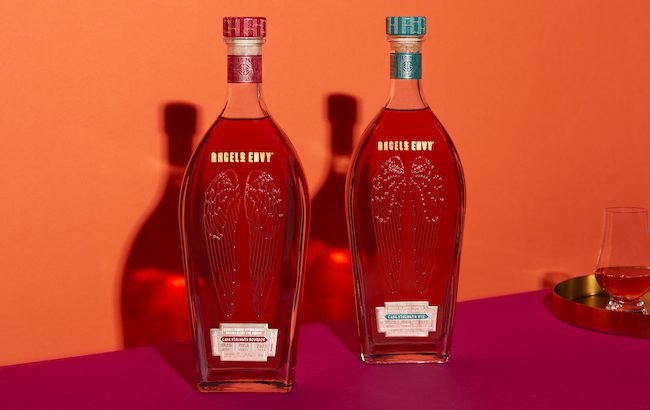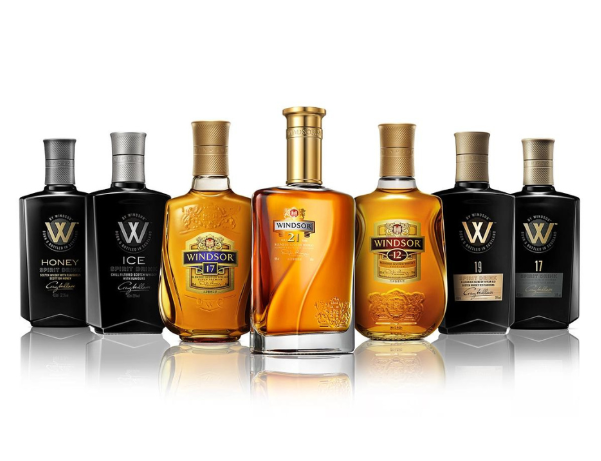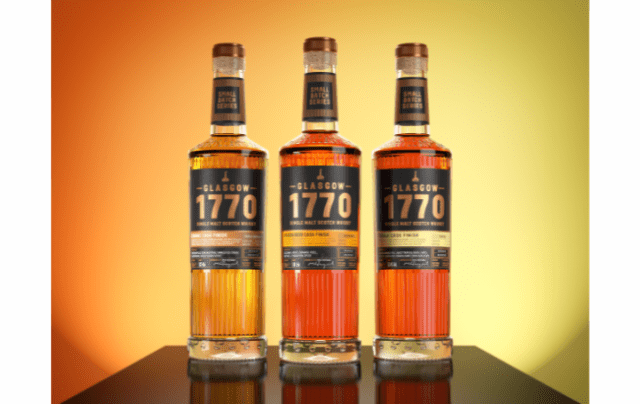During an era in which whiskey supplanted rum as American liquor of choice, three generations of the Felton distilling family remained faithful to the molasses-based libation for more than 80 years, operating a distillery accounted the oldest manufacturing plant in South Boston. Patriarch Luther Felton, son Luther H., and grandson Frederic, found ready customers for their products at home and abroad, becoming New England’s last remaining rum distillers.
 Luther Felton, shown here, was bucking a mighty tide in 1839 when he built and operated a distillery at the corner of Fifth, C, and Gold streets whose principal product was rum. Felton knew that the popularity of rum as an Americans drink was declining. During colonial times rum overwhelmingly was the people’s choice. Since the Revolutionary War, however, it had faded in popularity, replaced by whiskey.
Luther Felton, shown here, was bucking a mighty tide in 1839 when he built and operated a distillery at the corner of Fifth, C, and Gold streets whose principal product was rum. Felton knew that the popularity of rum as an Americans drink was declining. During colonial times rum overwhelmingly was the people’s choice. Since the Revolutionary War, however, it had faded in popularity, replaced by whiskey.
The causes were several: Rum was made from molasses, most of which came from the Caribbean, largely controlled by the British with whom Americans had fought two wars. Whiskey, on the other hand, was a domestic product made from Yankee farm grown corn, rye and wheat. Whiskey also was considerably cheaper, not taxed as heavily as imported rum and molasses.
 This decline made little difference to Luther who could trace his Felton ancestry in America back to 1640. His was one of the first families in Massachusetts. In 1919 the young man joined with an existing distiller in a rum-making venture subsequently known as “Bennett & Felton.” He broke with Bennett six years later to start his own distillery on Boston’s Washington Street. When that plant proved inadequate, he abandoned it and moved in 1839 to its final location. Luther called it “Crystal Spring Distillery.”
This decline made little difference to Luther who could trace his Felton ancestry in America back to 1640. His was one of the first families in Massachusetts. In 1919 the young man joined with an existing distiller in a rum-making venture subsequently known as “Bennett & Felton.” He broke with Bennett six years later to start his own distillery on Boston’s Washington Street. When that plant proved inadequate, he abandoned it and moved in 1839 to its final location. Luther called it “Crystal Spring Distillery.”
The distiller became known in South Boston for his civic activities there. Luther owned several large tracts in the community that he granted for public purposes. Among them was the land for the Mather School, today recognized as the oldest extant public school in America. Luther also was responsible for planting giant elm trees on along routes that would become South Boston thoroughfares.
 In 1844, Luther took his twenty-three year old son, Luther H. Felton, into the business. Born in 1921, the youth had been educated in the Boston public schools of the day, accounted among the Nation’s best. He was blessed with same entrepreneurial spirit as his father and the company became “Felton and Son.” Following his father’s death in 1868, Luther H. took over the distillery management and directed its enlargement, as shown below. In 1845, sales of rum are said to have benefited by an export demand from Crimean War combatants. While initially the Feltons sold rum domestically in barrels to saloons, hotels and restaurants, they transitioned to selling it as well to the public at retail in pint and quart bottles.
In 1844, Luther took his twenty-three year old son, Luther H. Felton, into the business. Born in 1921, the youth had been educated in the Boston public schools of the day, accounted among the Nation’s best. He was blessed with same entrepreneurial spirit as his father and the company became “Felton and Son.” Following his father’s death in 1868, Luther H. took over the distillery management and directed its enlargement, as shown below. In 1845, sales of rum are said to have benefited by an export demand from Crimean War combatants. While initially the Feltons sold rum domestically in barrels to saloons, hotels and restaurants, they transitioned to selling it as well to the public at retail in pint and quart bottles.

Under Luther H. the distillery staff was enlarged. A photo of employees below shows them posing on barrels of rum. Note that all are wearing hats of astonishing variety. The tall man at left carrying a folder may be Luther H. Note that two blacks are among the workers. The usual distillery dog, here a beagle,
lies in front of the assembly.
 By this time Frederick Luther Felton had entered the scene, working along side his father. Frederick was born in 1848 at the South Boston home of his mother’s family. He received a good education, initially at the esteemed Burrell private school and later at three public schools. Those were supplemented by a term at the Wesleyan Academy in Wilbraham, Massachusetts. He joined Luther L. in the family distillery at age 19, becoming a full partner in “Felton& Son in 1873 at age 25. From the outset Frederick demonstrated the same considerable business acumen as his forebears.
By this time Frederick Luther Felton had entered the scene, working along side his father. Frederick was born in 1848 at the South Boston home of his mother’s family. He received a good education, initially at the esteemed Burrell private school and later at three public schools. Those were supplemented by a term at the Wesleyan Academy in Wilbraham, Massachusetts. He joined Luther L. in the family distillery at age 19, becoming a full partner in “Felton& Son in 1873 at age 25. From the outset Frederick demonstrated the same considerable business acumen as his forebears.


Frederick moved vigorously to expand the business. As shown above, he designed new labels for Felton’s Old Rum, including one that featured a Native American chieftain. Recognizing that whiskey was eroding the demand for rum, he also added “Felton’s Rye” and “Felton’s Old Rye” to his distilled products. Frederick also provided his saloon customers with advertising signs. Among them was a reverse glass saloon sign displaying an artistically done nude damsel lying on a blanket in a rustic setting — bound to be a male crowd pleaser.
With reference to Frederick one observer noted: “The business of this time honored firm has increased with years and improved with age like its noted product, and its goods have a reputation not confined to the boarders of this country. Being found unsurpassed in quality it has found a ready sale at home and abroad.


 Continued success allowed Frederick to expand company facilities as shown in a second saloon sign. At least one five-story building had been added to the facility along with other construction. Although he had moved his residence to nearby Newton, Massachusetts, Frederick remained attached to his native South Boston, known for his continuing generosity to civic causes. In 1881 Felton & Son were awarded a medal by the Massachusetts Charitable Association as evidence of the family’s continuing philanthropy.
Continued success allowed Frederick to expand company facilities as shown in a second saloon sign. At least one five-story building had been added to the facility along with other construction. Although he had moved his residence to nearby Newton, Massachusetts, Frederick remained attached to his native South Boston, known for his continuing generosity to civic causes. In 1881 Felton & Son were awarded a medal by the Massachusetts Charitable Association as evidence of the family’s continuing philanthropy.
Dying in 1917 at the age of 69, Frederick did not see the coming of National Prohibition. Beginning about 1893, however, he apparently had anticipated the “dry” era and diversified. When liquor sales were banned in 1920, Felton family members could fall back on selling rum for ice cream, candies, mincemeat, and rum cured tobacco.
 By the time Repeal came in 1934, Frederic L. Felton of a fifth family generation was in charge. Felton & Son were the only distillers of New England rum left in America. Their ‘Pilgrim’ and ‘Crystal Spring’ rums were the only remaining national brands. The distillery continued to produce rum until 1983, and the buildings were sold. For a time the new owners rented them for light manufacturing, warehousing and office space. About 1991 the site was converted into artists’ workshops with studio space to create, display and sell art.
By the time Repeal came in 1934, Frederic L. Felton of a fifth family generation was in charge. Felton & Son were the only distillers of New England rum left in America. Their ‘Pilgrim’ and ‘Crystal Spring’ rums were the only remaining national brands. The distillery continued to produce rum until 1983, and the buildings were sold. For a time the new owners rented them for light manufacturing, warehousing and office space. About 1991 the site was converted into artists’ workshops with studio space to create, display and sell art.
Note: This post relies heavily on two sources. First: The Illustrated History of South Boston: Comprising a Historical Record and Pictorial Description of the District, Past and Present, by Charles B. Gillespie, Inquirer Publishing, 1900. It provided information about the early Feltons and featured their photos. The second source was Rum Yesterday and Today, by Hugh Barty-King & Anton Massel, 1983. Their book brought the rum story forward into more recent times.
















